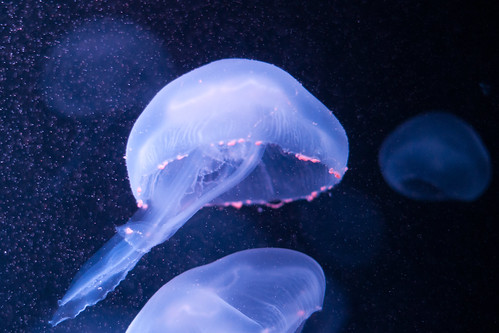Jellyfish are fascinating creatures that have been around for millions of years. They are not fish but invertebrates belonging to the phylum Cnidaria, including corals and anemones. Jellyfish have a simple body structure consisting of a bell-shaped dome, a mouth, and tentacles that can sting their prey and predators.
One of the most exciting aspects of jellyfish is their reproductive cycle. Unlike most animals, jellyfish can reproduce both sexually and asexually, depending on the environmental conditions and the stage of their life cycle. This article will explore how jellyfish are born, how long they are pregnant, and when they mate.
Contents
How are jellyfish born?
Jellyfish have two main stages in their life cycle: the polyp stage and the medusa stage. The polyp stage is when they are attached to a solid surface on the sea floor and look like tiny anemones or corals. The medusa stage is when they are free-swimming and look like the typical bell-shaped jellyfish we are familiar with.
Jellyfish can reproduce sexually in the medusa stage by releasing eggs and sperm into the water. The sperm fertilizes the eggs and develop into planula larvae, which are oval-shaped and covered with tiny hairs called cilia. The planula larvae swim to the sea floor and attach themselves to a substrate, where they transform into polyps.
Jellyfish can also reproduce asexually in the polyp stage by budding new polyps from their body. These polyps can form colonies that share feeding tubes. When the polyps are ready to become medusae, they undergo a process called strobilation, where they develop horizontal grooves that separate into disc-shaped segments. These segments detach from the polyp and become ephyrae, baby jellyfish with arm-like protrusions.
How long are jellyfish pregnant for?
The jellyfish gestation period varies depending on the species and the environmental conditions. Jellyfish have a gestation period of 2-3 days. They have an average gestation period of 2 days. The planula larvae can float on the surface of the water for a few days before settling on the sea floor. Therefore, the time between fertilization and birth can range from 2 to 5 days for most jellyfish.
However, some jellyfish species may have longer or shorter gestation periods. For example, some box jellyfish can release fertilized eggs directly into the water, which hatch into ephyrae within hours. On the other hand, some polyps may delay their strobilation for years or decades if the conditions are not favorable for their survival.
Are jellyfish asexual?
Jellyfish are not strictly asexual or sexual but alternate between these reproduction modes depending on their life cycle stage. As mentioned above, jellyfish can reproduce sexually in the medusa stage and asexually in the polyp stage. This means that they can produce offspring without mating with another individual. Still, they can also exchange genetic material with other members of their species.
Some jellyfish species may favor one mode of reproduction over another, depending on their environment. For example, some moon jellyfish may skip the polyp stage altogether and produce ephyrae directly from fertilized eggs. This may allow them to colonize new habitats faster than other jellyfish that rely on polyps.
Mating season for jellyfish
Jellyfish do not have a fixed mating season but respond to changes in temperature, salinity, food availability, and other factors affecting their growth and development. Generally speaking, most jellyfish species tend to spawn in warmer months when there is more plankton in the water for them and their offspring to feed on. However, some jellyfish species may spawn at different times of the year, depending on their location and adaptation.

